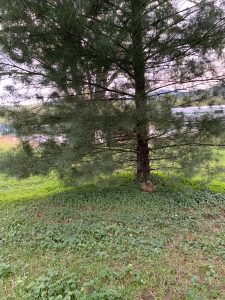
My sit spot location
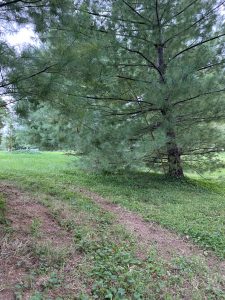
The left (south direction) of my sit-spot

The right side (North direction) of my sit-spot
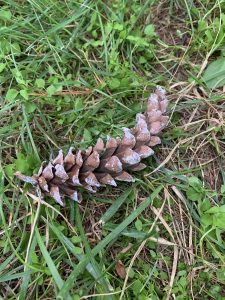
The changing adaptations of the pine cones O observed on the ground.
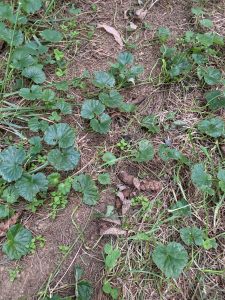
The adaptations of the leaves that I had examined on the ground.
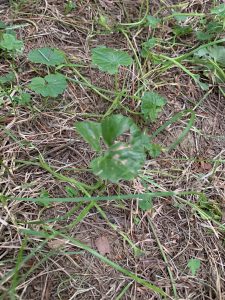
My first item, which was a plant with a few holes. It not completely eaten up with brown streaks along the leaves’ surface.
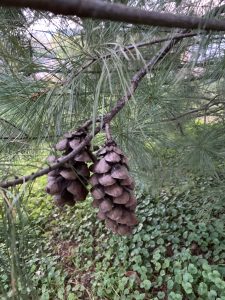
My second item that I tracked from the First Sit Spot. The pine cones on the pine tree.
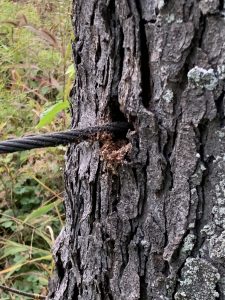
The side of the tree of the third thing I examined in my first sit-spot. The role that traveled through the side of the bark.
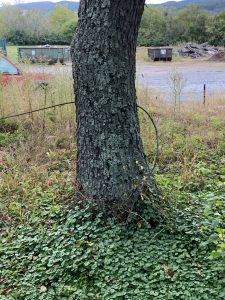
The third thing I examined at my first sit-spot. The lichens and miss on the tree as well as the plants.
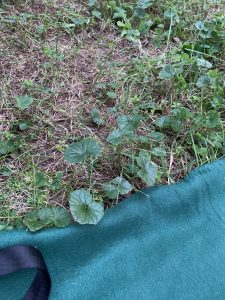
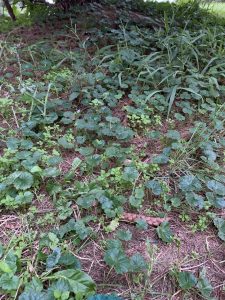
The adaptations of the plants on the ground.

The stick insect I had observed on the rope of the third thing I was examining.
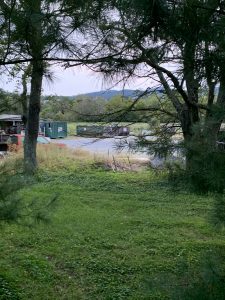
The empty lot directly in front of me (in the West direction).
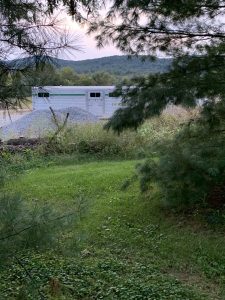
The Hollins horses carrying truck in the open lot in front of me.
9/23/2020 Time Arrived- 5:30 Time Left- 7:03
My sit-spot is located near the Horses Stables close to the riding center. As I walk to my sit-spot, I walk from Tinker (my housing dorm) and turn left from the entrance of the building. I follow the long path down with the Batten Tennis Court on my right side. I walk all the way down the path and turn right at the Community Garden and the parking lot. From there, I continue my path straight up towards the riding center. I pass by the little white sign that reads “Riding Center.” On my left side as I walk up to my sit-spot, I pass by a small shed with a sign that reads “Hollins Paint Shop.” As I continue to travel up the incline of the hill towards the riding center (directly in front of me in the North direction), I pass by a large old, brown shed with three large doors. The doors have large x-shaped wood planks of wood. To my right side, I can see the mountains all the way on the opposite side of the campus. At this point, I am 0.2 miles up the hill to the riding center, where I start to see an opening on my left-hand side as I am walking up to the riding center trail, an empty lot with a few old trucks, and what seems to be the truck where the Hollins horses are transported to riding events. I then enter to my left, an opening of a group of trees, which are located on a downward incline, where you can find my sit-spot. My sit-spot is surrounded by 8 large pine trees, and a regular looking tree to my Southwest direction.
Upon arriving to my sit-spot this evening, I had noticed a lot more specific things when walking around and closely observing the things around me. I had noticed that a lot of the pinecones had fallen off the pine trees. I had also observed, especially to the tree that is on the North side of where I sit that there is a pinecone that has fallen to the ground that has characteristics of being a white pinecone. It has whiteish-gray coloring near the edges and tips of the pinecone. The cone -bearing evergreens have a straight bark. The white appearance is from the dried sap on the outside of the pinecones. The pinecone is about 4-5 inches long, it is brow and slender, and grows alongside its needles at the end of the pine trees’ branches. The pinecones around the area of my sit-spot have clearly reached maturity, as the scales flare outwards, releasing the seeds that are dispersed by the wind. Many are still in the process of maturity. The White Pine has long, slender cones. The bark of Eastern White Pine, like that of many trees, changes as the tree matures. The trees around me are still in the process of fully maturing. When young, the bark is smooth and greenish gray in color. Mature Eastern White Pine trees develop bark with is grayish to reddish-brown, with layers of scales forming ridges that are broken into irregular blocks. The bark on the pine trees look as if you could peel them off by the chunks. It was very interesting to see just how many changed had occurred at my sit-spot after visiting only two weeks later. I found it fascinating that I could also hear different animals and sounds. I heard birds chirping, it sounded like a garden bird, with the different rhythmic frequencies of its calling. After researching the specific type of birds, I heard, I found that I had heard the singing of the chaffinch, wren, baby jay, house sparrow and blackbird. It was insane that I heard such a large variety of birds, after listening closely. They all had their own tunes and were dancing in the trees above my head. I was able to look closely at a lot of different things in my sit-spot that I had not noticed my first time of going there. I saw that in the distance in my Southwest direction, about 20 feet away from me, I could see a regular tree with leaves on it, but upon approaching it, I had notice the textured pattern on it. On the left side of the tree, there was some time of rope that went in the side of the tree and was attached to a pole along its left side. The piece of rope that went into the tree, left a large hole, of which it looked like sticky sap was coming out of it. The substance was sticky and brown in appearance. In addition, I was also able to distinctly smell the manure from the riding stable, combined with the scent of the pine trees. I could hear the crickets, cicadas, and another noise that came from an animal making a twitching noise.
Walking around my sit-spot area and observing specific things in nature, was something I had really wanted to do when I first discovered my sit-spot. There was so much unclaimed territory that I was destined to explore. I was astonished by the number of things I had found, once looking closer at the trees, the grass, plants, pinecones, and insects. When I had first discovered my sit-spot, I had looked around briefly, but this time, I had made sure to be completely “in tune” with my environment before getting up and doing quiet observations. I had noticed so many patterns about my surroundings, and the trees around me. After doing some research before arriving to my sit spot, I had heard lots of noises of the organisms and species around me and recognized some of them. However, a lot of the noises were also very new. There was a larger variety of birds singing this time, and the insects I had seen were different. Upon investigating the tree in my Southwest direction, that I had mentioned before, I was able to touch the lichens on the tree. However, I had gotten a little startled when I noticed that a stick bug had crawled from the tree onto my hand. I freaked out a bit, but I was sure to safely place the little stick bug/ walking stick back onto the tree safely. I then watched it crawl around the tree, and camouflage with the exact color of the tree. I was very interested in seeing the insect because I had never seen a walking stick that close before. I had then noticed, while returning to my sit-spot on the ground, that there was a grasshopper that jumped onto my blanket, and immediately jumped off and disappeared into the grass. This led me to further investigate the insects around me. I counted three small brown moths, several black carpenter ants, one ladybug, and a few orange colored butterflies. Upon noticing the several insects around me, I gained a greater appreciation for the number of things I had discovered in nature. I was so intrigued by my findings and was happy that I got up and looked around my sit-spot, because I would have never known about these insects and organisms.
As for my three things that I had noticed last time, I had discovered that a lot of the objects had changed. My first object was the small plant with a triangle design on the center of the leaves. I had discovered that a lot of the plants around my that were once vibrant green and full, had hundreds of insect bites and holes in them. The plants started to develop a brown color on the dark green leaves, and they had large holes in them. My plant in specific, had also had lots of insect-eaten holes in them. Some of the plants remained the same, but a large majority of the plants had been chewed on and eaten. For my second object, the pinecones on the specific bottom part of the tree in my Northwest direction, had also started to have a greenish, gray appearance. The pinecone had also started to develop the white, almost frosty layer on it. Its cones were opened more in the outward direction. For my third object, the lichens on the tree had gotten a lot greener in color. I was able to go and touch the lichens and moss on the tree and found it to be very rigid and worn out. However, I did not examine there to be any dramatic changes tot the lichens located on the tree.
In my sit-spot, I had noticed there were several adaptations exhibited by the organisms and species around me. One adaptation that I had observed my organism possessing were the small green plants around me on the floor. The plants contained large flowery leaves, that were round in shape. This specific shape allows for more surface area, to collect more water. A challenge that these plants may have been facing is that there was little rainfall and moisture in the ground, therefore, the plant leaves additionally contained almost a glossy coating on the leaves, in order to prevent any unnecessary evaporation or loss of water to occur. The plants were also located close to the ground, while others stood higher. For The plants that were higher off the ground exhibited signs of containing Lots of shade and moisture within the ground. For the plants that were lower to the ground exhibited of the ground being dry with lots of sunlight and little shade. It was not hard to see these adaptations since it was pretty observant in the type of plant at the location plant. I think this was because the location contained lots of sunlight in some areas and more shaded other areas. Also, my sick spot is located on a downward incline, therefore a lot of the water would typically run down the incline. Where there was more runoff located at the bottom of the incline near the empty lot, the plants exhibited signs of being higher off the ground and having more shade due to the large trees surrounded by it. for the plants that were located near the top of the incline experienced having adaptations in which they were lower to the ground at experienced more sunlight, and less shade. A second adaptation that I had observed in the organisms was Adaptations of vegetation for the pine trees. For the eastern white pine trees as I had witnessed at my sit spot, the pinecones carried seeds of the Pines that the squirrels and chipmunks which strip out and eat. In order to protect the seeds, the Pines of the pinecones would be more closed and narrowed in, and as they matured, they would open up. These pine trees also contained shallow roots that spread out widely to take advantage of the moisture in the upper levels of the ground, which only thoughts occasionally. They are also shallow due to the poor soil and the rocky conditions of being located on a downward incline. The trees have pine needles instead of broad leaves because they are in an important adaptation due to the climate. the pine needles contain very little sap, therefore freezing is not a major problem. Being dark in color they absorb what little light falls on their surfaces. The challenges is that led to these adaptations in which the pine trees were facing was do you large amounts of water that was unnecessarily being you got rated, therefore these adaptations were formed to limit the amount of water that enters it leaves the plant cells through the stomata cells, therefore the longs in shape and wax covering of the pine needles slows down evaporation so that the tree doesn’t lose much water. This adaptation was not very difficult to see, as it was observant by physically looking at the tree. I think this adaptation of occurred due to the location up the pine trees where there was little precipitation. Bird adaptation that I had noted what as well is the adaptation of a stick insect. Their twig like body, long, thin legs and long antenna help them to blend in with the twigs and branches in which they feed. In addition to their brownish green color which acts as camouflage and makes it hard to see them when they’re feeding on the leaves the trees. These physical adaptations help them survive in their forest habitat. The challenge is that I believe led to these adaptations for the stick insect was that the stick exact was at more risk of predation while collecting food , therefore stick insect adapted to create camouflage in which it is able to resemble the shape end appearance of a stick on a tree, therefore limiting the amount of predation, and the amount of environmental conditions that it may be affected by. This adaptation was also clearly visible within the stick insect. I was able to recognize the stick insect , after it had crawled onto my hand when I least expected it. Since it mimics it blends in with its environment it was pretty difficult to spot it at first. however after spotting the insect, I had realized that the reason that I hadn’t noticed the stick insect as well at first was due to his camouflage adaptation in order to better suit its living standards for the environment it was in.
Overall, I really enjoyed this second sit-spot as an opportunity to explore the many adaptations and environment around my sit-spot at a much more closely observed spectrum.

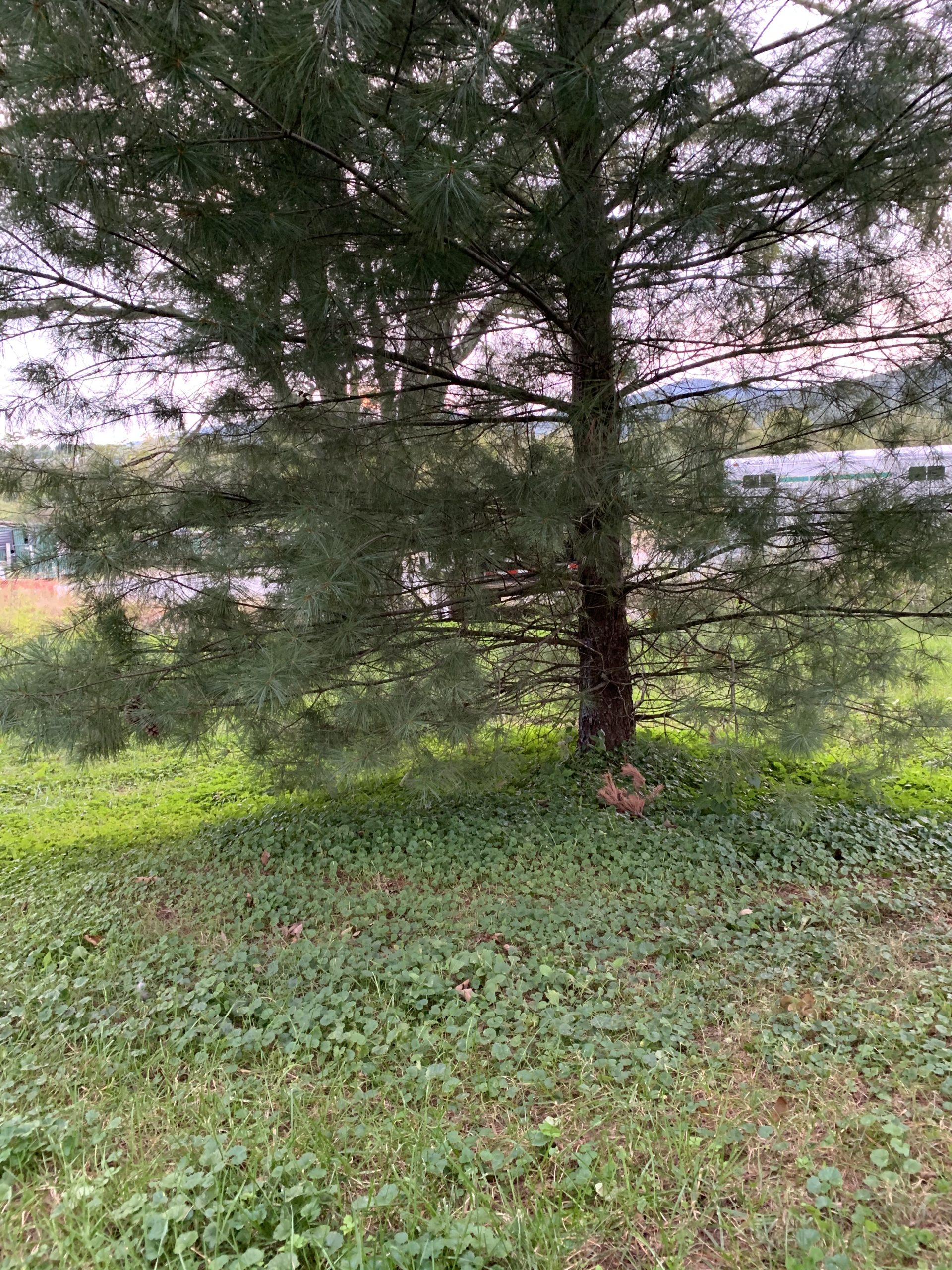
How did the walking stick move across your hand? Was is slow, fast, did it grab on to your hand or simply move over it? By the way I really enjoy your writing style.
When I was reading your blog, it felt like I could recreate all of the images in my mind with how vivid your descriptions were, especially with all of the captioned pictures that are a great reference. I’ve seen a lot of stick bugs around campus, but I’m shocked one actually got that close to you; hopefully, you might be able to see it next time to observe it over the season change.